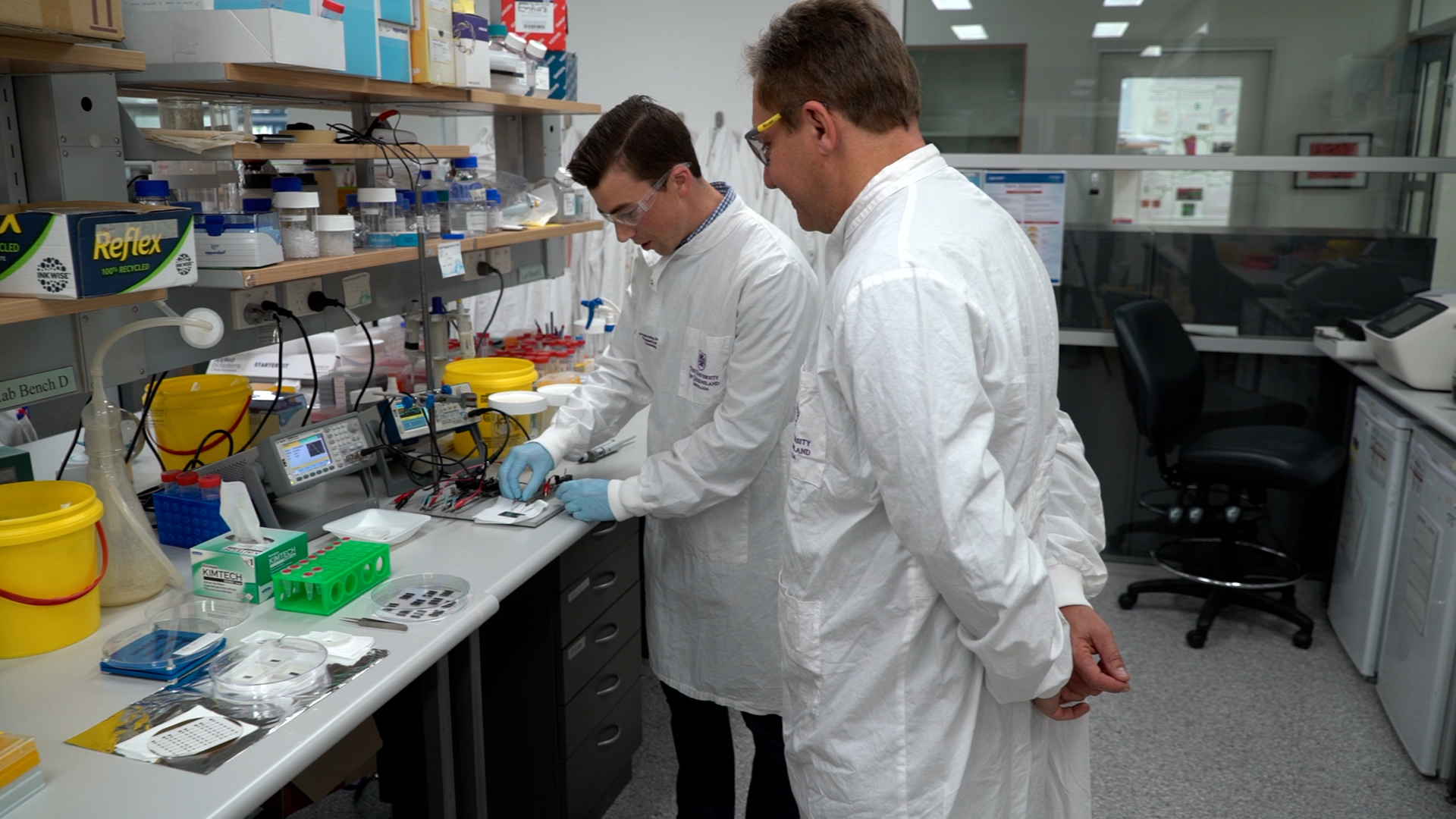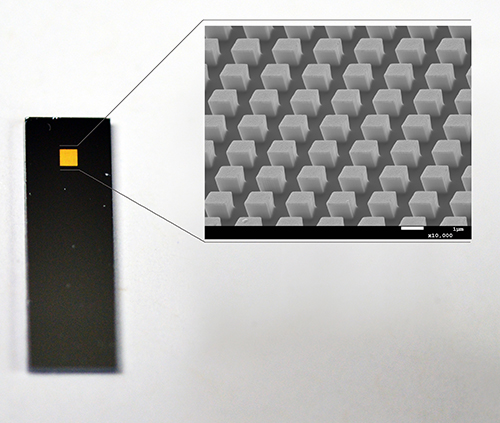It’s smaller than a SIM card, made from gold, and can detect the earliest signs of disease in our blood.
Now researchers from the Australian Institute for Bioengineering and Nanotechnology (AIBN) have adapted their groundbreaking immunostorm chip technology to help long COVID patients potentially dodge serious heart problems.
In a UQ-led collaboration published in Nature Microbiology, researchers used the immunostorm chip to pinpoint cardiac tissue damage markers in the blood of long COVID patients.
It’s a new role for the tiny diagnostic device, which emerged from the AIBN labs in 2021 as a method to detect the onset of a potentially deadly immune reaction known as a cytokine storm.
AIBN PhD scholar Courtney Vedelago - one of the key figures behind the latest adaptation of the chip – says the research establishes a clear link between long COVID and the onset of symptoms like chest pain and heart palpitations.
It also confirms the suitability of the immunostorm chip as warning system to better protect heart health.
“The idea of the immunostorm chip was always to have better eyes on how the immune system works,” Courtney says.
“This is a device that is incredibly sensitive – and so we’re able to pick up information that traditional technologies are not able to.”
“It ultimately means we can jump in early and stop something from becoming a bigger problem, whether that is a cytokine storm or potential tissue damage in the wake of a COVID infection.”
So what exactly is the immunostorm chip?
How does it work?
And how might it be used to help people in the future?
Storm system approaching
Portable and precise, the immunostorm chip emerged from the lab of Laureate Professor Matt Trau, aided by AIBN researchers Dr Alain Wuethrich and Junrong Li.
The tech was initially designed to determine which patients could be at risk of a potentially lethal cytokine storm, an uncontrolled immune response which damages the body’s tissues.

As Professor Trau explains, cytokines are small proteins that act as messengers between cells in the immune system, and play a critical role in triggering inflammation by stimulating the movement of immune cells toward sites of injury or infection.
“When this becomes uncontrolled and causes damage, more cytokines are produced and it becomes a vicious cycle,” he says.
Cancer patients who undergo cutting-edge immune therapy are among the most likely to experience these cytokine storms, while COVID-19 patients are also vulnerable.
Thankfully, the immunostorm chip is capable of spotting an impending cytokine storm days or weeks before its arrival by detecting faint but distinctive patterns in a blood sample.

The chip’s tiny array of gold pillars and attached antibodies are designed to stick to specific cytokines present in blood, with gold-silver ‘nanotag’ particles emitting bright light when they encounter single captured cytokine molecules.
This allows minute levels of inflammation to be detected by conventional and inexpensive optical imaging equipment.
Ultimately, the chip tells doctors when it is time to begin or to ease treatments by accurately monitoring the patient’s immune response, making it easier to fine-tune a patient’s therapy.
Courtney Vedelago says it is this heightened sensitivity that has been crucial in the evolving use of the immunostorm chip, and its potential application for mental and mood disorders, cirrhosis and skin disorders, or fatty liver disease.
“Inflammation is something that happens in so many diseases,” says Courtney.
“It could be a chronic disease, an underlying disease, or something that is not acute, but also not well characterised due to a lack of technologies that can accurately profile inflammatory molecules at such low levels.
“And so once we had the chip technology, we then started to ask questions about other diseases that we couldn't ask before. And we really got to see trends and the roles of low-level inflammation in things like long Covid.”
Getting to the heart of the matter
In their recent Nature Microbiology publication, Courtney and her colleagues pioneer the use of the immunostorm chip to identify cardiac tissue damage markers in the blood of long COVID patients – a finding which could explain why people experience ongoing cardiovascular issues after contracting the virus.
Alongside fellow PhD student Jane Sinclair from the UQ School of Chemistry and Molecular Biosciences (SCMB) Courtney led the immunostorm chip testing of 50 participants across Australia who had either suffered long COVID for more than a year, had recovered from COVID, or had never had the virus.
The immunostorm chip was used to discover trace elevated cytokines in the long COVID cohort, along with cardiac tissue damage markers measured at single-molecule resolution in blood.
SCMB’s Associate Professor Kirsty Short – lead senior author of the paper - said until now, the role of chronic inflammation in cardiovascular symptoms hadn’t been clear, particularly in individuals with symptoms persisting for over a year after infection.
Join The Network
Stay on top of our industry news and developments, events and opportunities, by joining The Network
“This is a concept that is then also applicable to other organs - and in response to many other factors as well - just by having technology that is so incredibly sensitive, you might be able to see low grade damage to organs and get a better understanding and hopefully then also achieve a better response and treatment.”
Dr Alain Wuethrich, who has been key to the development of the immunostorm chip, said the paper was the first time the technology was used to simultaneously to measure trace level inflammation right alongside trace level cardiac tissue damage caused by the inflammation.
“Given the fact that our immune system is so generally involved in all disease states and advanced treatments, in the future, one could imagine much broader applications for this technology and approach,” he said.
“This could mean sensitive monitoring of tissue damage side effects during chemo and immunotherapy cancer treatments, daily immune dysregulation in depression, or monitoring the effects of accelerated aging in ways that have not been measured before”.
Check out the paper for yourself here.
Interested to learn more about the importance of nanotechnologies to better understand the role of trace-level cytokines in disease? Check out this Perspective published in Nature Immunology.



